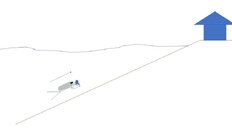I'm placing this is basic scuba instead of instructor-to-instructor for the reason that I'd like feedback from divers of all levels, from not even certified yet to experienced instructors. This absolutely belongs here in basic scuba as we are talking about open water courses, and there is nothing more basic than that.
Now I do take open water instruction seriously, but still make sure it is fun, and convey concepts in a way that students will remember them.
In my opinion, the most important thing a diver must be able to do is to remain motionless at a fairly constant depth (depending on the length of their breath cycle, they will ascend and descend slightly). But when you really think about it, it is important for a student to do what exactly? That's right! Nothing!
It is my job to first weight my students properly, which as I have said many times includes weight distribution so that the student can float horizontal effortlessly with little change in depth. Second, it is my job to teach my students how to do this (and I'm in the process of ways to improve that).
For students that saw Seinfeld when it aired (US, Gen X and later), I think they'll remember this. What about the idea of doing nothing as to understand what buoyancy control is all about?







